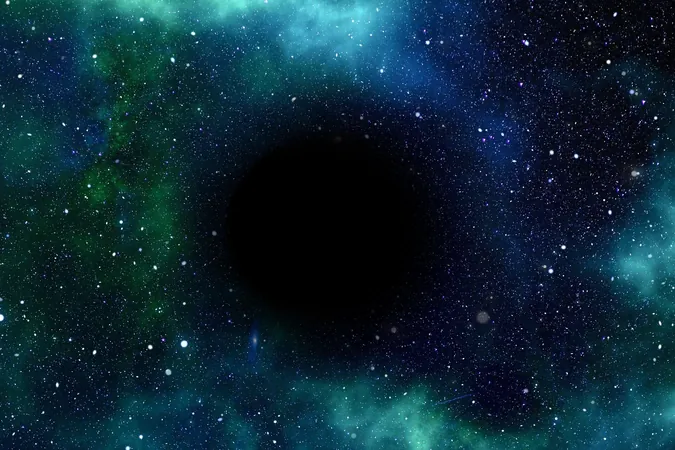
Breakthrough Discovery: Scientists Confirm Merging Black Holes Theory with Crystal-Clear Signals
2025-09-13
Author: Liam
Ten Years of Gravitational Wave Research Yield Stunning Results
A decade after the first detection of gravitational waves from colliding black holes, the groundbreaking LIGO-Virgo-KAGRA collaboration has made waves yet again! This elite team, featuring Columbia's own astronomy professor Maximiliano Isi, recently recorded an astonishing signal from a nearly identical black hole collision.
A Leap in Detection Technology
Thanks to major advancements in detection technology, researchers have achieved almost four times the clarity compared to their initial observations, allowing them to reaffirm two crucial theories: the size of merging black holes does not shrink—an idea famously posited by the late Stephen Hawking—and that these cosmic giants resonate like a bell when disturbed, validating Albert Einstein's general relativity.
"The exceptional clarity of the signal from the black hole merger known as GW250114 tests some of our most critical theories on black holes and gravitational waves," Isi exclaimed.
Hawking's Theory Revisited
In 1971, Hawking theorized that the event horizon of a black hole—essentially its outer shell—could never shrink. In 2021, with data from the LIGO gravitational wave detector, Isi and his team first confirmed this theory, sparking speculation that its impact might have earned Hawking a Nobel Prize had he lived to see it.
Publishing New Precision Findings
The latest results, featured in Physical Review Letters, provide even more precise confirmation of Hawking’s hypothesis, demonstrating that a merged black hole's surface area cannot be less than the combined area of the original black holes. This remarkable level of precision was achieved by simultaneously analyzing data from LIGO's detectors in Washington state and Louisiana.
Unlocking the Secrets of Black Holes
In an exciting twist, the researchers isolated and scrutinized the gravitational waves emitted after the black holes merged. By analyzing the pitch and duration of these waves, they gleaned new insights into the merged black hole's structure, akin to understanding the dimensions of a musical instrument by its sound.
The Kerr Black Hole Confirmed!
Their findings indicate that the merged black hole fits the description of a "Kerr black hole," a term named after mathematician Roy Kerr, who solved Einstein’s complex equations in the 1960s. This solution is pivotal for accurately describing black holes, yet proving it has always posed a challenge for physicists.
With this crystal-clear signal, Isi and his team have arguably secured the most direct evidence to date that black holes adhere to Kerr's predictions, pushing our understanding of these enigmatic cosmic entities to thrilling new heights!









 Brasil (PT)
Brasil (PT)
 Canada (EN)
Canada (EN)
 Chile (ES)
Chile (ES)
 Česko (CS)
Česko (CS)
 대한민국 (KO)
대한민국 (KO)
 España (ES)
España (ES)
 France (FR)
France (FR)
 Hong Kong (EN)
Hong Kong (EN)
 Italia (IT)
Italia (IT)
 日本 (JA)
日本 (JA)
 Magyarország (HU)
Magyarország (HU)
 Norge (NO)
Norge (NO)
 Polska (PL)
Polska (PL)
 Schweiz (DE)
Schweiz (DE)
 Singapore (EN)
Singapore (EN)
 Sverige (SV)
Sverige (SV)
 Suomi (FI)
Suomi (FI)
 Türkiye (TR)
Türkiye (TR)
 الإمارات العربية المتحدة (AR)
الإمارات العربية المتحدة (AR)